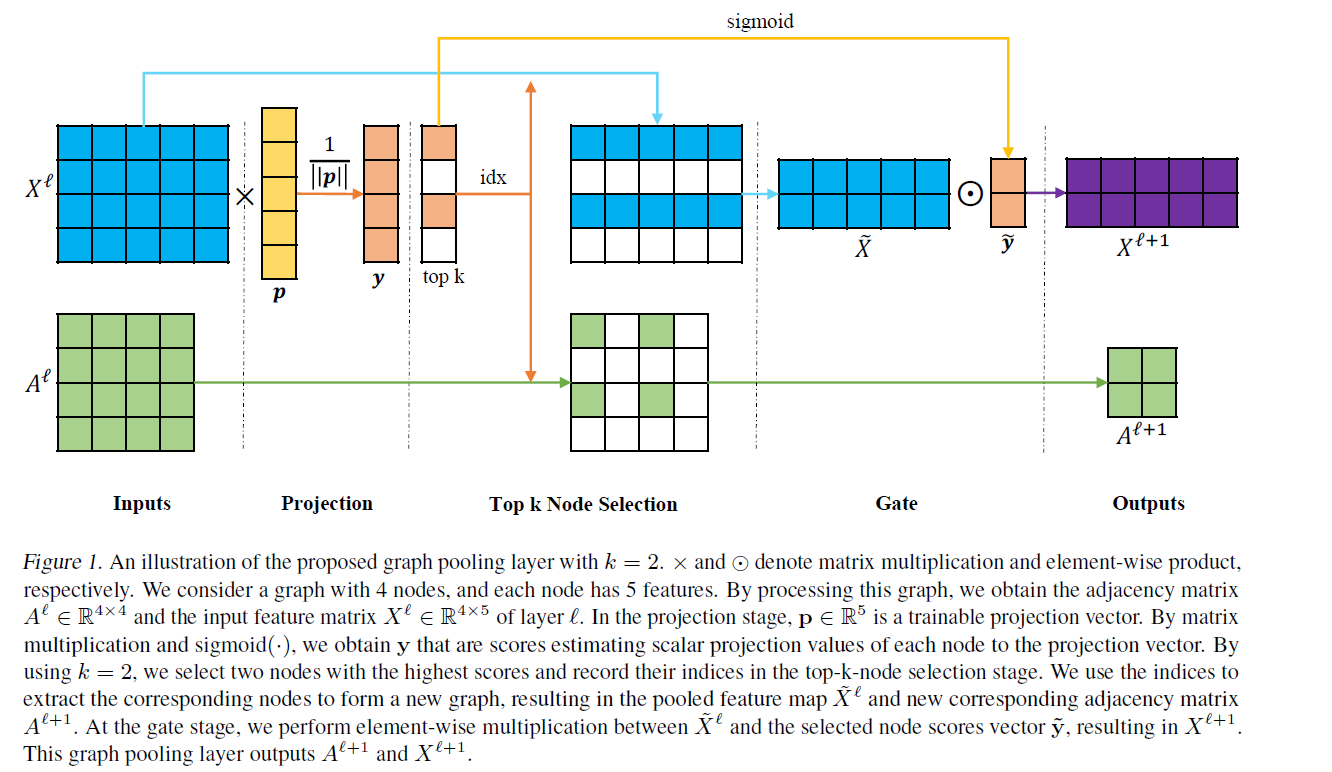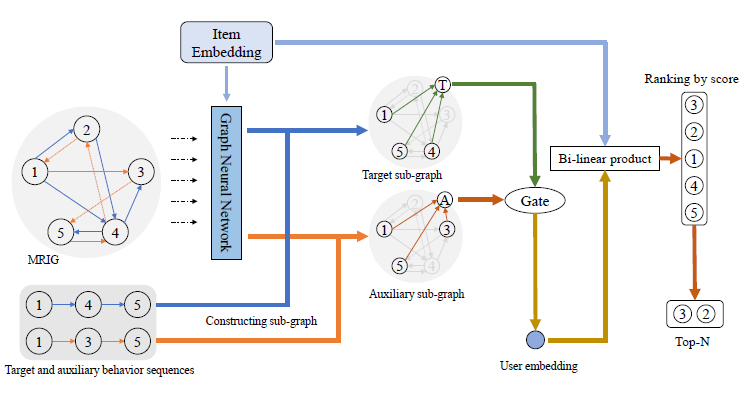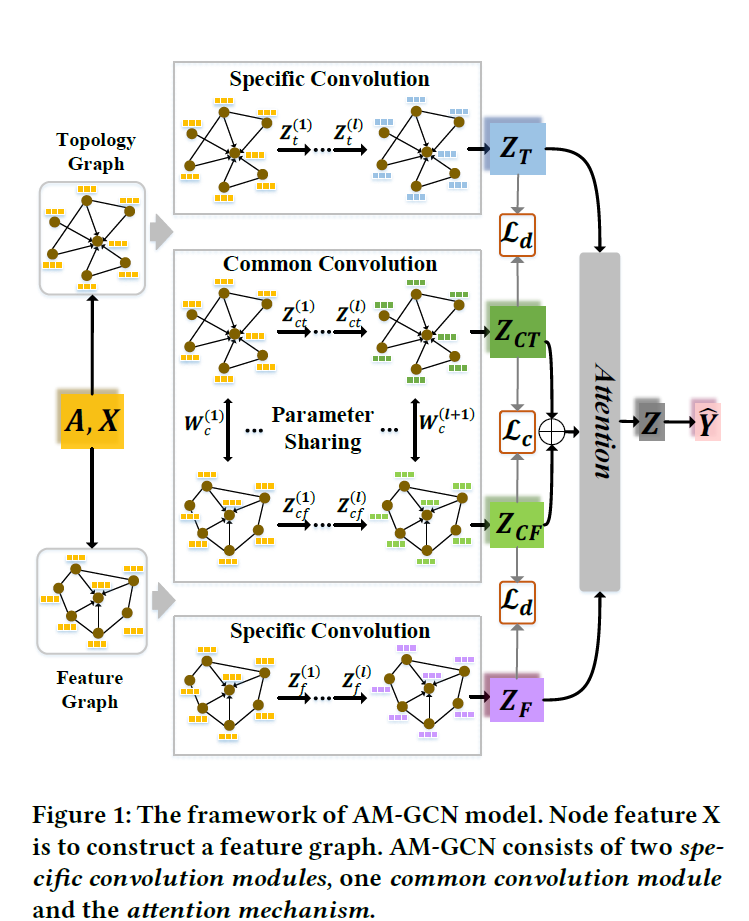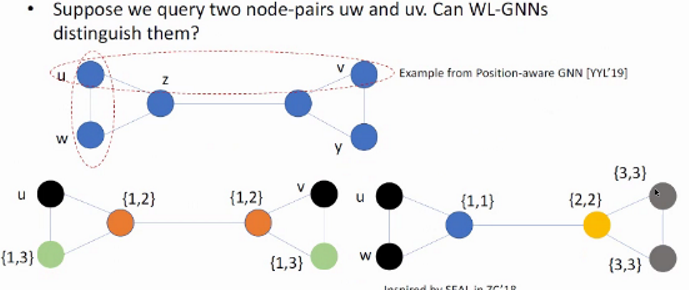Abstract:
传统的深度学习协同过滤,ID的嵌入是直接输入交互层,但是在NGCF中,其能捕获用户和物品之间的高阶关系。

Method:
假设:
Intuitively, the interacted items provide direct evidence on a user’s preference [16, 38]; analogously, the users that consume an item can be treated as the item’s features and used to measure the collaborative similarity of two items.
Message Construction:
$e_i$,$e_u$ 做哈达玛积,然后通过$W_2$ 转换,然后和$e_1$ 通过$W_1$ 做转换之后相加。然后除以度数乘积进行归一化。

Message Aggregation:
邻居信息相加聚合在加到用户自身上和用户相加通过激活函数。
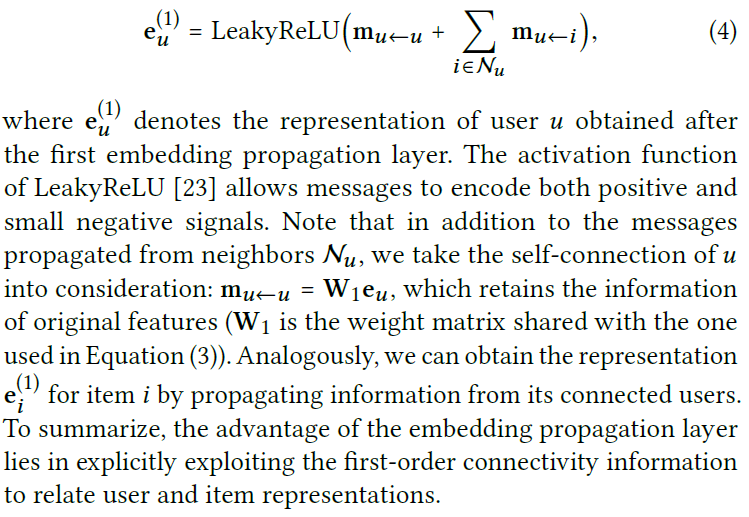
多层次卷积:
很典型的图卷积矩阵定义
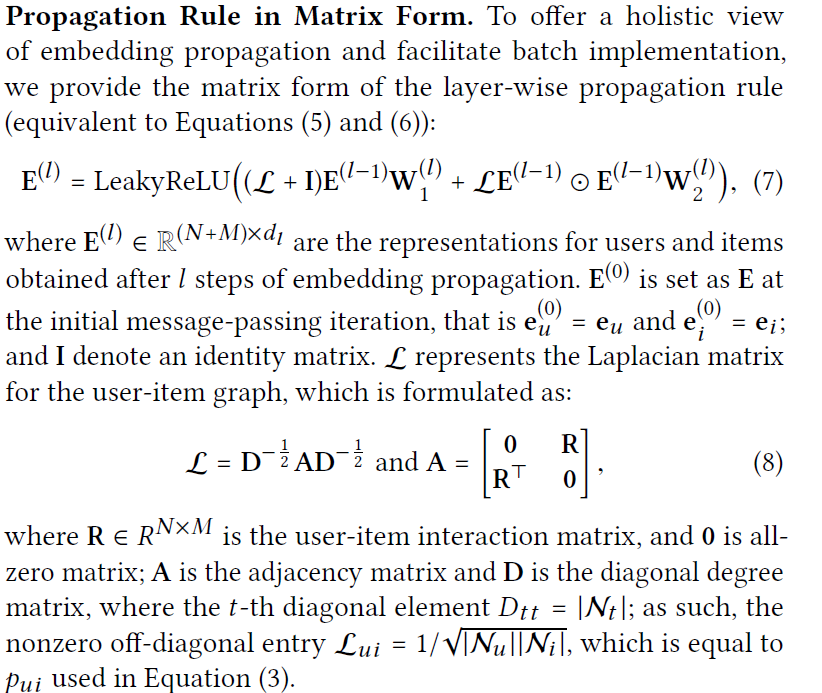
Model prediction:
每一层都会得到用户u的表示,将其拼接得到用户最后的表示。
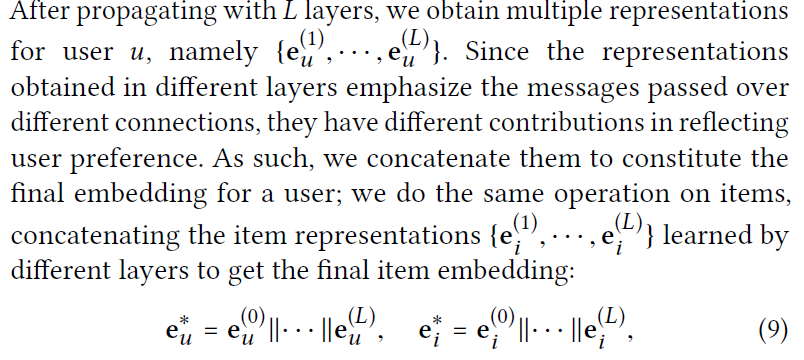
同理得到物品的表示,然后点积预测结果。
Loss采用BPR loss
Pairwise。对于implicit feedback(如是否购买),BPR对每一个user建立一个偏序关系
。如图所示,user-item矩阵中,+表示用户购买了该商品,?表示没有购买。比如,对user 1来说,他购买了
,没有购买
,则对于他来说,2和3比1和4好,但2、3之间,1、4之间无法比较
来自 [*https://zhuanlan.zhihu.com/p/31841042*](https://zhuanlan.zhihu.com/p/31841042)

